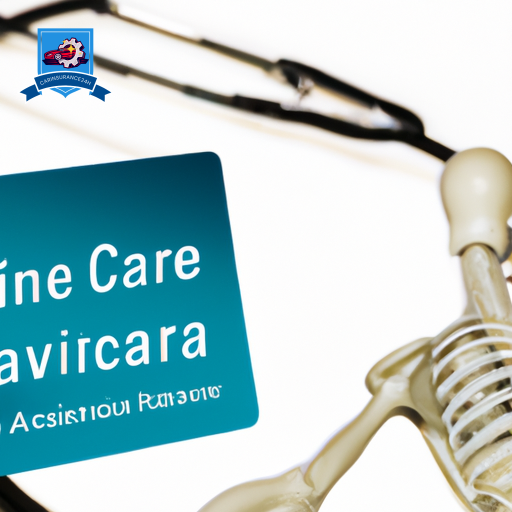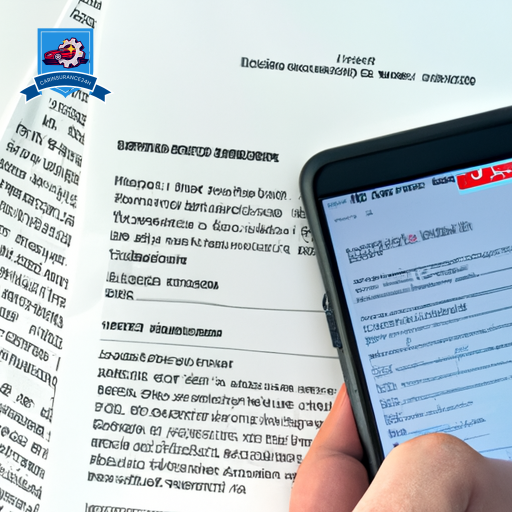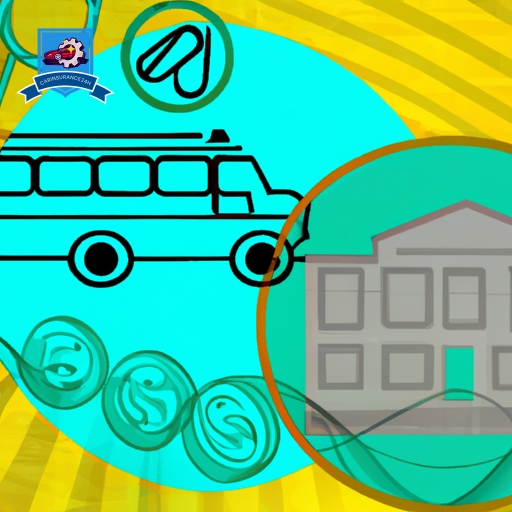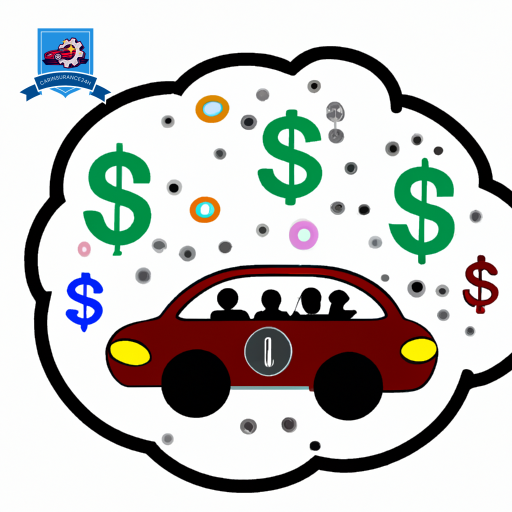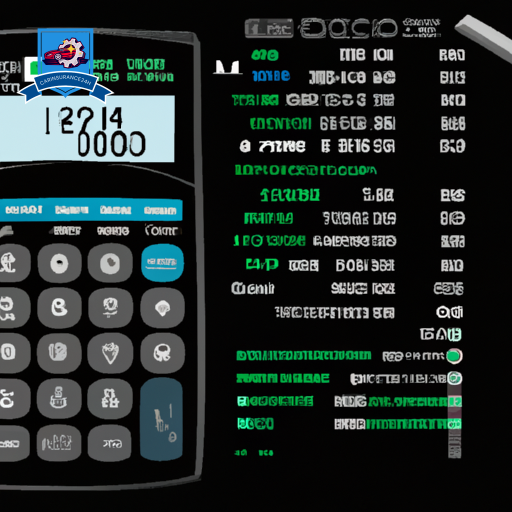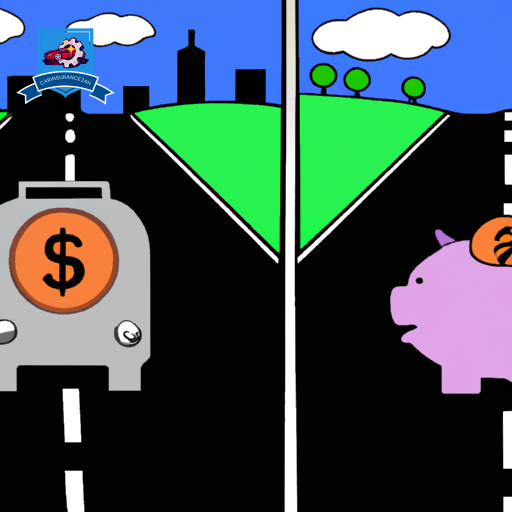In the evolving landscape of auto insurance, pay-per-mile car insurance emerges as a tailored solution, offering a nuanced approach to coverage that aligns directly with individual driving habits. This model presents clear cost-saving benefits for low-mileage drivers and enhances billing transparency, yet it is not devoid of drawbacks.
The limited appeal for frequent drivers, coupled with concerns surrounding tracking and privacy, as well as the potential for unexpected costs, necessitates a thorough evaluation. As we explore the intricacies of this insurance model, it is imperative to take into account both its advantages and limitations to discern its suitability for diverse driver profiles.
Understanding Pay-Per-Mile Insurance
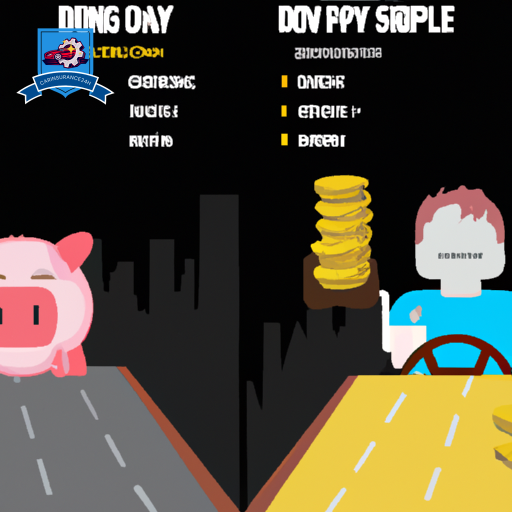
Pay-per-mile insurance is an innovative auto insurance model that charges drivers based on the number of miles they drive, offering a potentially more cost-effective solution for low-mileage drivers. This approach is tailored to meet the needs of those who use their vehicles sparingly, thereby aligning the cost of insurance more closely with actual vehicle use. Understanding the nuances of this insurance model is important for making an informed decision.
One significant aspect to take into account in pay-per-mile insurance is the coverage limits. Just like traditional auto insurance policies, pay-per-mile insurance comes with coverage limits that cap the amount the insurer will pay in the event of a claim. These limits are predefined in the policy and can vary significantly from one insurer to another. It’s imperative for potential policyholders to review these limits carefully to make sure they are adequately covered for both property damage and bodily injury liabilities.
Policy exclusions are another critical factor to understand. These exclusions delineate scenarios or conditions under which the insurance policy will not provide coverage. Common exclusions in pay-per-mile policies may include incidents occurring when the vehicle is used for commercial purposes, or when the driver is engaged in illegal activities. Understanding these exclusions is crucial, as it helps avoid unexpected surprises at the time of a claim.
Pro: Cost Savings for Low-Mileage Drivers

One significant advantage of pay-per-mile car insurance is the potential for cost savings, particularly for drivers who log fewer miles. This insurance model offers reduced premium costs directly correlated with the amount of driving, thereby providing financial benefits to low-mileage drivers.
Moreover, it encourages a reduction in driving and allows for flexible policy adjustments to suit changing driving habits.
Reduced Premium Costs
For drivers who log fewer miles annually, opting for pay-per-mile car insurance can greatly lower their premium costs. This insurance model is particularly beneficial for those whose driving habits indicate less frequent use of their vehicle, thereby reducing the risk of accidents and claims. However, it’s essential to understand coverage limitations that may accompany such policies.
| Factor | Traditional Insurance | Pay-Per-Mile Insurance |
|---|---|---|
| Annual Mileage | High | Low |
| Premium Cost | Higher | Lower |
| Coverage | Broad | Specific Limitations |
This table illustrates the fundamental differences, highlighting how pay-per-mile insurance offers a financially savvy option for low-mileage drivers. The critical takeaway is that by aligning insurance costs with actual vehicle usage, drivers can enjoy substantial savings without compromising on essential coverage, provided they are aware of any limitations.
Encourages Less Driving
Building on the financial benefits highlighted for low-mileage drivers, adopting pay-per-mile car insurance also serves as an incentive to reduce overall driving, further amplifying cost savings. This insurance model implicitly encourages policyholders to reassess and potentially alter their driving habits to minimize unnecessary trips and, consequently, insurance costs.
Such behavior not only leads to direct savings on premiums but also indirectly reduces expenses related to vehicle maintenance. Fewer miles driven means less frequent need for maintenance services like oil changes, brake pad replacements, and tire rotations, thereby extending the lifespan of the vehicle.
Flexible Policy Adjustments
Pay-per-mile car insurance policies offer the advantage of flexible adjustments, accommodating cost savings for drivers who cover fewer miles. This flexibility not only allows for significant financial savings but also provides the ease of adjusting coverage based on current driving needs without the rigidity found in traditional policies.
For instance, if a driver anticipates a period of reduced vehicle use, they can benefit from lower premiums due to decreased mileage, without facing the complexities of policy cancellation. However, it’s essential for policyholders to be aware of any coverage limitations that may apply, ensuring they remain adequately protected.
This adaptability makes pay-per-mile insurance an attractive option for those seeking control over their insurance expenses, aligning costs directly with vehicle usage.
Pro: Enhanced Transparency in Billing
One noteworthy advantage of pay-per-mile car insurance is its ability to offer unparalleled transparency in billing to customers. Traditional car insurance policies often involve complex calculations and estimations that can lead to billing discrepancies and unforeseen rate variability. This can result in confusion and dissatisfaction among policyholders who are unable to reconcile their expected premiums with the actual charges. Pay-per-mile insurance, on the other hand, simplifies this aspect considerably by tying costs directly to a clear and measurable factor: the distance driven.
The enhanced billing transparency provided by pay-per-mile insurance can be illustrated through the following points:
-
Direct Correlation: Charges are directly linked to the miles driven, making it easier for policyholders to understand how their premiums are calculated. This direct correlation eliminates the guesswork and uncertainties associated with traditional billing methods.
-
Real-Time Tracking: Many pay-per-mile insurers utilize telematics to track mileage in real-time, providing policyholders with up-to-date information on their driving habits and associated costs. This immediate feedback allows for a higher degree of control over insurance expenses.
-
Detailed Statements: Insurers typically offer detailed billing statements that break down the charges by mileage. This level of detail empowers customers to verify their bill’s accuracy easily and understand precisely what they are paying for.
Pro: Environmental Benefits
Turning our attention to the environmental advantages, pay-per-mile car insurance emerges as a catalyst for positive change.
By directly linking driving costs to mileage, it incentivizes reduced vehicle usage, subsequently diminishing the carbon footprint associated with road transport.
Additionally, this pricing model promotes the use of public transportation and contributes to alleviating traffic congestion, further underscoring its ecological benefits.
Reduced Carbon Footprint
Adopting pay-per-mile car insurance can greatly contribute to environmental preservation by incentivizing drivers to reduce their vehicle usage, thereby lowering their carbon footprint. This approach aligns seamlessly with broader urban planning and green technology initiatives, aiming to create more sustainable living environments.
The environmental benefits manifest in several tangible ways:
- Reduced greenhouse gas emissions, as fewer vehicle miles translate directly into less fuel burned.
- Less traffic congestion, which further decreases vehicular emissions and promotes cleaner urban air quality.
- Encouragement of smarter urban planning, where cities can focus on developing infrastructure that supports alternative modes of transportation and green technology solutions.
Encourages Public Transport
Building on the environmental benefits of reduced vehicle usage, pay-per-mile car insurance further promotes the use of public transport, amplifying its positive impact on urban sustainability. This shift towards public transportation not only contributes to a decrease in air pollution but also serves as a catalyst for advancements in urban planning and infrastructure development.
By incentivizing individuals to opt for buses, trains, and other modes of mass transit, cities are compelled to invest in and enhance their public transport systems. This, in turn, leads to more efficient, reliable, and accessible services, reinforcing the cycle of sustainable urban mobility.
Consequently, the adoption of pay-per-mile car insurance can play a pivotal role in driving the evolution of urban environments towards greener, more sustainable futures.
Lowers Traffic Congestion
One significant advantage of pay-per-mile car insurance is its potential to reduce traffic congestion, thereby offering environmental benefits by lowering emissions from idling vehicles. This innovative insurance model aligns perfectly with urban planning objectives aimed at creating more sustainable and livable cities. By incentivizing drivers to use their vehicles less, pay-per-mile insurance directly contributes to:
- Reduced vehicle density on roads, leading to smoother traffic flow.
- Lowered greenhouse gas emissions, supporting efforts to combat climate change.
- Enhanced road safety, as fewer cars translate to decreased chances of accidents.
This approach not only promotes a healthier environment but also aligns with broader urban planning goals to improve the quality of life in densely populated areas while ensuring road safety through reduced vehicular traffic.
Con: Limited Appeal for Frequent Drivers
For individuals who frequently travel long distances, pay-per-mile car insurance may not present the most cost-effective option. This type of insurance policy, which bases premiums on the number of miles driven, can be financially burdensome for those whose lifestyle or profession demands extensive driving. Road tripping enthusiasts and professionals with significant business commuting responsibilities might find that the cumulative cost of their insurance premium significantly exceeds that of a traditional, flat-rate policy. This disparity arises because each mile traveled directly increases the insurance cost, potentially leading to high monthly premiums for frequent drivers.
Additionally, this pricing model may inadvertently discourage essential travel or make it more costly. For people living in rural areas or those with jobs that require travel across vast distances, the financial implications of pay-per-mile insurance could limit mobility or increase the cost of living and working. The appeal of pay-per-mile insurance diminishes as the odometer climbs, positioning it as a less attractive option for a substantial segment of the driving population.
Another critical aspect to take into account is the fluctuating nature of driving needs. Individuals who may not drive frequently throughout the year but occasionally go on long-distance road trips or have seasonal spikes in business commuting will find it challenging to predict their insurance expenses. The unpredictability associated with varying driving patterns complicates budgeting, as premiums can significantly vary from one month to another, depending on the distance driven.
Therefore, while pay-per-mile car insurance offers benefits for low-mileage drivers, its cost-effectiveness and appeal significantly decrease for those who frequently find themselves on the road. This limitation restricts its suitability to a narrower audience, particularly excluding those for whom driving is an indispensable part of daily life or work.
Con: Tracking and Privacy Concerns
While the cost implications of pay-per-mile car insurance for frequent drivers present a significant drawback, another concern that merits attention is the potential for tracking and privacy issues. This model, which often relies on telematics to monitor vehicle usage and miles driven, inherently involves the collection and transmission of personal data.
The implications for data security and privacy are substantial, leading to a trio of primary concerns:
-
Data Security Risks: The transmission and storage of personal driving data pose a risk of breaches. Insurers must employ robust cybersecurity measures to protect this sensitive information from hackers. Without stringent data security protocols, there’s a risk that personal information could fall into the wrong hands, leading to identity theft or other forms of cybercrime.
-
Constant Surveillance Concerns: The necessity for devices that track mileage and driving habits can feel like constant surveillance to some policyholders. This can lead to discomfort and a sense of loss of privacy, as every trip—no matter how short or mundane—is logged and assessed.
-
Accuracy of Location Data: The precision of location tracking technology is another concern. While designed to guarantee location accuracy, it’s not infallible. Misinterpretations or errors in data could potentially lead to disputes between insurers and policyholders regarding the actual miles driven or locations visited.
Con: Potential for Unexpected Costs
Although pay-per-mile car insurance offers a cost-saving potential for infrequent drivers, it can introduce unexpected expenses that may offset these savings for others. This model, while innovative, may not be as predictable as traditional insurance plans, especially when considering factors like maintenance neglect and seasonal variability.
| Factor | Description | Impact on Costs |
|---|---|---|
| Seasonal Variability | Driving patterns can change with seasons, leading to higher mileage and costs in certain months. | May increase premiums unexpectedly. |
| Maintenance Neglect | Less frequent driving might lead to postponed maintenance, potentially causing higher repair costs. | Can lead to significant unplanned expenses. |
| Unplanned Trips | Sudden need for increased driving (emergencies, unexpected events) can spike costs. | Results in unpredicted premium hikes. |
| Lifestyle Changes | Changes in work location or lifestyle can significantly increase mileage unexpectedly. | Could lead to a reevaluation of the cost-benefit ratio. |
The allure of savings with pay-per-mile insurance can be compelling, particularly for those who use their vehicles sparingly. However, the unpredictability of life—be it through seasonal changes that affect driving habits or sudden lifestyle adjustments—can lead to a surge in mileage that wasn’t accounted for, subsequently inflating costs. Additionally, the tendency to neglect vehicle maintenance when driving less frequently can backfire, resulting in hefty repair bills down the line. These factors highlight the potential for unexpected costs that could diminish the initial appeal of pay-per-mile insurance, urging consumers to weigh these considerations carefully against the perceived benefits.
Making the Switch: Considerations
Deciding to switch to pay-per-mile car insurance requires careful consideration of several critical factors. This insurance model, intriguing for its promise of potential savings for low-mileage drivers, presents a unique set of considerations that must be evaluated to make an informed decision. Understanding these aspects ensures that individuals select an insurance option that aligns with their driving habits and financial preferences.
-
Installation Process: The first consideration is the installation process of the tracking device or app that monitors vehicle usage. This process should be straightforward and not overly invasive to one’s privacy or vehicle integrity. Prospective policyholders need to be comfortable with the level of data shared with their insurance provider, including location and driving behavior. The ease of installation and the data privacy measures in place are paramount in deciding whether this type of insurance is suitable for an individual’s needs.
-
Coverage Limits: Understanding the coverage limits is another vital factor. Pay-per-mile insurance policies might have different coverage limits compared to traditional policies. It’s essential to assess whether these limits meet your needs, especially if you occasionally undertake long trips. Ensuring that the coverage is comprehensive and aligns with personal requirements will provide peace of mind while on the road.
-
Comparison with Traditional Policies: Lastly, comparing the cost-effectiveness of pay-per-mile insurance against traditional policies is crucial. This involves not only looking at the per-mile rate but also considering any fixed costs associated with the policy. The goal is to determine whether the pay-per-mile option offers genuine savings for your specific driving patterns and lifestyle.
Frequently Asked Questions
How Does Pay-Per-Mile Car Insurance Impact a Driver’s Behavior in Terms of Driving Habits and Frequency?
Pay-per-mile car insurance can serve as a double-edged sword, fostering safer driving habits and reduced vehicle use, hence offering environmental benefits. This model incentivizes fewer miles driven, aligning safety incentives with financial savings.
Can Pay-Per-Mile Insurance Be Combined With Traditional Insurance Policies to Create a Hybrid Plan Tailored to a Driver’s Unique Needs?
Pay-per-mile insurance can indeed be integrated with traditional policies, offering hybrid benefits through policy customization. This approach allows for a tailored insurance solution that aligns with the unique driving habits and needs of the individual.
What Are the Tax Implications, if Any, of Switching to a Pay-Per-Mile Car Insurance Policy?
Switching to a pay-per-mile car insurance policy may not directly influence tax deductions but could introduce filing complexity. Accurately tracking and reporting mileage for potential deductions necessitates meticulous record-keeping, ensuring precision in tax-related matters.
How Does the Introduction of Pay-Per-Mile Insurance Affect the Competitive Landscape of the Insurance Industry?
The introduction of pay-per-mile insurance alters market dynamics, fostering policy innovation among competitors. This shift prompts insurers to adapt, potentially leading to more tailored offerings and affecting overall competition within the insurance industry.
Are There Specific Vehicle Types or Models That Are Ineligible for Pay-Per-Mile Insurance, and What Are the Reasons for Such Exclusions?
Certain vehicles are deemed ineligible for pay-per-mile insurance due to factors such as technology limitations and vehicle affordability. These exclusions guarantee the service’s viability while addressing the practicality of monitoring and cost implications for insurers.


